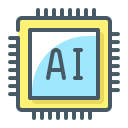An Overview of AI: Essential Concepts for Beginners
Chosen theme: An Overview of AI: Essential Concepts for Beginners. Welcome to a friendly, practical introduction to artificial intelligence—what it is, why it matters, and how you can start exploring confidently. Read on, ask questions, and subscribe to follow our beginner friendly AI journey.

What Is AI, Really?
Early AI systems followed rigid if then rules. Modern systems learn patterns from data, improving with experience. Think of it like teaching by examples rather than writing every instruction. Curious where rules still shine? Share your thoughts below.
My friend once hand wrote filters for spam and missed half the junk. He switched to a learning model that adapted daily, catching sneaky messages without new rules. What everyday task would you love to make learnable?
AI surged because powerful chips became affordable, vast datasets grew from everyday digital life, and smarter algorithms matured. When these three meet, capability leaps forward. Comment with where you have seen this trifecta change your tools.
Core Concepts Every Beginner Should Know
Supervised, unsupervised, and reinforcement learning
Supervised learning maps inputs to known labels. Unsupervised learning finds structure without labels. Reinforcement learning learns via rewards and penalties. Picture a tutor, an explorer, and a gamer. Which style matches a challenge you face today?
Models, training, and inference
A model is a mathematical recipe for making predictions. Training adjusts its parameters using data. Inference is the moment a trained model makes a live prediction. Post a comment with where you encounter inference in daily life.
Features, labels, and evaluation
Features are the measurable inputs. Labels are the correct answers during training. Evaluation checks performance with held out data. Metrics like accuracy, precision, and recall reveal strengths and pitfalls. Which metric do you find most intuitive and why?
Data: The Fuel and the Friction
Ten thousand messy examples can mislead more than one thousand clean, well labeled ones. Consistency, coverage, and clear definitions reduce confusion. Have you cleaned a messy spreadsheet lately? Share what made it tricky and how you fixed it.
Neural Networks Without the Jargon
Layers, neurons, and activation
Imagine layers of simple decision makers stacking insights. Each neuron weighs inputs, passes a signal through a squashing function, and shares it forward. Depth allows complex patterns to emerge. What everyday process reminds you of layered decision making?
Overfitting versus generalization
A model that memorizes training examples may stumble on new cases. Generalization means capturing underlying patterns, not noise. Techniques like regularization and validation protect against overfitting. Comment if you have ever crammed for a test and recognized this feeling.
Explainability: peeking inside the box
Tools like feature importance, saliency maps, and example based explanations help reveal why a model decided. Explanations do not need to be perfect to be useful. Which kind of explanation would help you trust an AI recommendation more?
Everyday AI You Already Use
Recommendation systems learn from your clicks, watch time, and similar users to surface relevant options. They balance exploration and familiarity. Have you discovered a favorite book or show this way? Share it, and tell us what hooked you.
Everyday AI You Already Use
Speech recognition turns audio into text. Natural language understanding parses intent. A dialog manager keeps context, while synthesis speaks back. Try asking a tougher question tonight and note where it succeeds or struggles, then tell our community.
Everyday AI You Already Use
Your phone uses computer vision for face unlock, photo categorization, and augmented reality. Behind the scenes, convolutional networks detect edges, textures, and shapes. Which vision feature feels most magical to you, and why does it matter in daily life?



Your Beginner Roadmap
Start with intuition
Begin by reading approachable explainers and sketching concepts by hand. Build mental models before code. Keep a learning journal to track questions. Comment with one concept you want demystified, and we will cover it in an upcoming post.
Hello, world of models
Try a tiny project: classify movie reviews, cluster news headlines, or predict simple prices. Use hosted notebooks and small datasets. Share your results or roadblocks in the comments, and subscribe for weekly walkthroughs and code snippets.
Join a community
Learning sticks when shared. Participate in forums, local meetups, and study groups. Offer feedback on others projects and ask for critique. Tell us where you are learning from, and we will highlight helpful communities in future posts.
